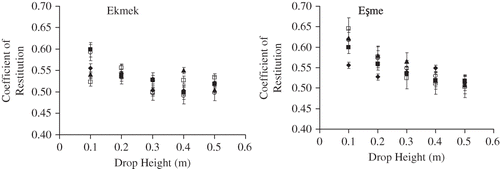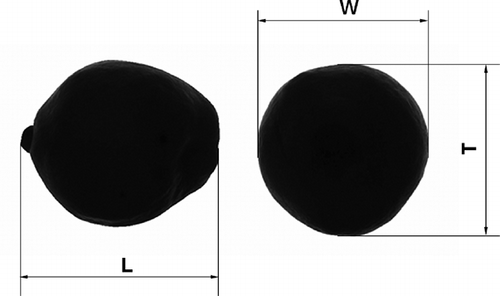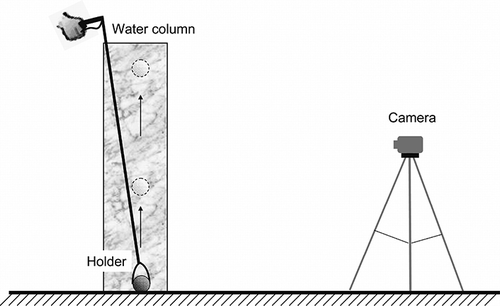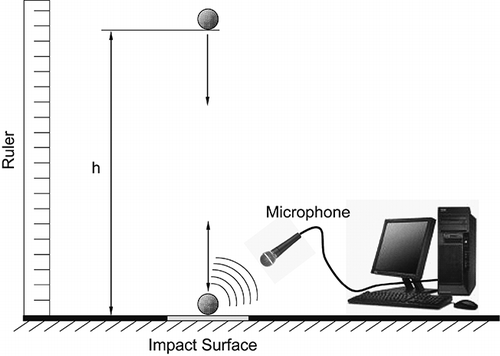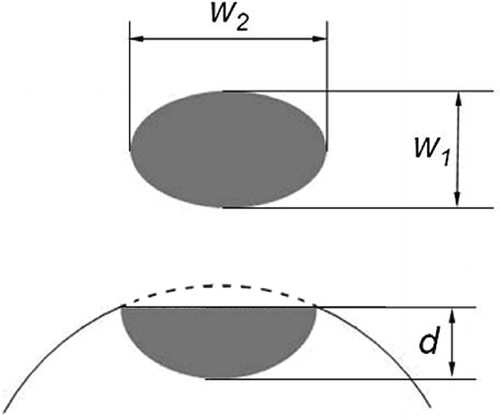Figures & data
Table 1 Selected geometric and hydrodynamic properties of two quince varieties
Figure 5 Relationship between bruise areas and drop heights for quince impacts against different materials: plastic (♦), wood (■), rubber (▲), stainless steel (○), corrugated board (□).

Figure 6 Relationship between bruise volumes and drop heights for quince impacts against different materials: plastic (♦), wood (■), rubber (▲), stainless steel (○), corrugated board (□).

Table 2 The Duncan grouping of coefficient of restitution, absorbed energy, bruise area, and bruise volume for drop heights and counterface materials for Ekmek variety
Table 3 The Duncan grouping of coefficient of restitution, absorbed energy, bruise area, and bruise volume for drop heights and counterface materials for Eşme variety
Figure 7 Relationship between coefficient of restitutions and drop heights for quince impacts against different materials: plastic (♦), wood (■), rubber (▲), stainless steel (○), corrugated board (□).
